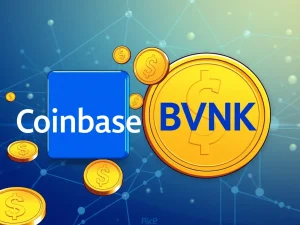Strategic DePIN Tokens: An Imperative for Sovereign Reserves

The global financial landscape is shifting. Major powers, including the United States with its exploration of a Strategic Bitcoin Reserve and a broader US Digital Asset Stockpile (DAS), are seriously considering the role of digital assets in national reserves. Countries like Czechia are also formulating their sovereign digital asset reserve plans. While assets like Bitcoin and select altcoins are part of this conversation, a crucial element is often overlooked: DePIN tokens. Integrating DePIN tokens into a nation’s digital asset strategy is not just a financial consideration; it’s a strategic move to enhance infrastructure resilience, drive innovation, and position a country at the forefront of the decentralized future.
What Are DePIN Tokens and Why Do They Matter?
DePIN stands for Decentralized Physical Infrastructure Network. This model fundamentally changes how essential infrastructure is built and maintained. Instead of relying solely on large corporations or government entities, DePIN leverages blockchain technology and token incentives to empower communities to build, operate, and maintain physical networks. Imagine citizens sharing bandwidth from their home devices to create a distributed WiFi network or contributing sensor data for environmental monitoring – and earning tokens for their participation.
This community-driven approach offers several advantages:
- **Cost Efficiency:** Reduces the need for massive capital expenditures by governments or companies.
- **Resilience:** Creates decentralized, censorship-resistant networks less vulnerable to single points of failure or geopolitical risks.
- **Innovation:** Fosters a dynamic environment where innovation is driven by a large, incentivized community.
- **Economic Opportunity:** Creates new income streams and a ‘gig economy’ around infrastructure maintenance and contribution.
Integrating DePIN into Digital Asset Stockpiles
For countries establishing digital asset stockpiles, including DePIN tokens offers unique strategic benefits beyond simply holding store-of-value assets like Bitcoin. While Bitcoin serves as a digital gold, DePIN tokens represent operational stakes and ownership in vital decentralized infrastructure. They possess tangible value tied to the utility and performance of the underlying networks, similar to how equities represent ownership in companies.
Adding DePIN tokens to reserves allows a nation to directly invest in and support the growth of decentralized infrastructure within its borders and potentially across international lines. This can strengthen technological leadership and encourage DePIN projects to build networks beneficial to citizens, from connectivity to environmental monitoring.
DePIN as a Strategic Sovereign Reserve
Historically, sovereign reserves and wealth funds aim to preserve national wealth through diversification. However, traditional assets and even simple digital stores of value can be vulnerable to inflationary pressures and market sell-offs. The high inflation rates seen in recent years highlight the need for assets that can act as a true hedge.
DePIN offers a compelling hedge because the services provided by these networks (like internet access, energy, transportation data) are often components of the Consumer Price Index (CPI). Holders of DePIN assets can potentially see the value of their tokens appreciate as the cost of these underlying services rises due to inflation. Furthermore, DePIN networks can dynamically adjust token rewards based on economic shifts, potentially offering compounded returns (CPI increase + token issuance) that counteract market downturns.
Beyond Traditional Crypto Reserves
While many nations are exploring crypto reserves, focusing only on major cryptocurrencies misses the opportunity presented by DePIN. DePIN tokens offer a unique blend of digital asset characteristics and real-world utility tied to physical infrastructure. This makes them a distinct and valuable asset class for a diversified national portfolio.
Investing in DePIN signals a commitment to the future of infrastructure – one that is decentralized, community-driven, and resilient. It aligns incentives between users, providers, and investors, fostering a more sustainable and scalable model than traditional infrastructure development which has often been characterized by monopolies or large-scale government ownership, sometimes stifling innovation.
Crafting a National Digital Asset Strategy with DePIN
Integrating DePIN into a national digital asset strategy is a forward-thinking approach. It positions a country to lead in the next wave of technological innovation. By supporting decentralized infrastructure, governments can potentially reduce their own research and development expenses, allowing funds to be allocated elsewhere. It also increases the likelihood of infrastructure innovation by involving a large crowd of participants directly in their daily infrastructure.
This decentralized approach can also help ensure that national infrastructure remains affordable to maintain over time, potentially reducing the need for massive tax hikes often required for large-scale government-funded projects. Policymakers who act now to include DePIN in their strategy can secure a leadership position in this evolving landscape.
The Future is Decentralized Infrastructure
Including DePIN tokens in national digital asset reserves is more than a financial transaction; it’s a strategic imperative for nations aiming to lead in the decentralized era. It’s an opportunity to build more resilient, cost-effective, and innovative infrastructure, while also providing a potential hedge against inflation for national wealth. The countries that recognize and embrace the potential of DePIN today will be best positioned to thrive in the future.







